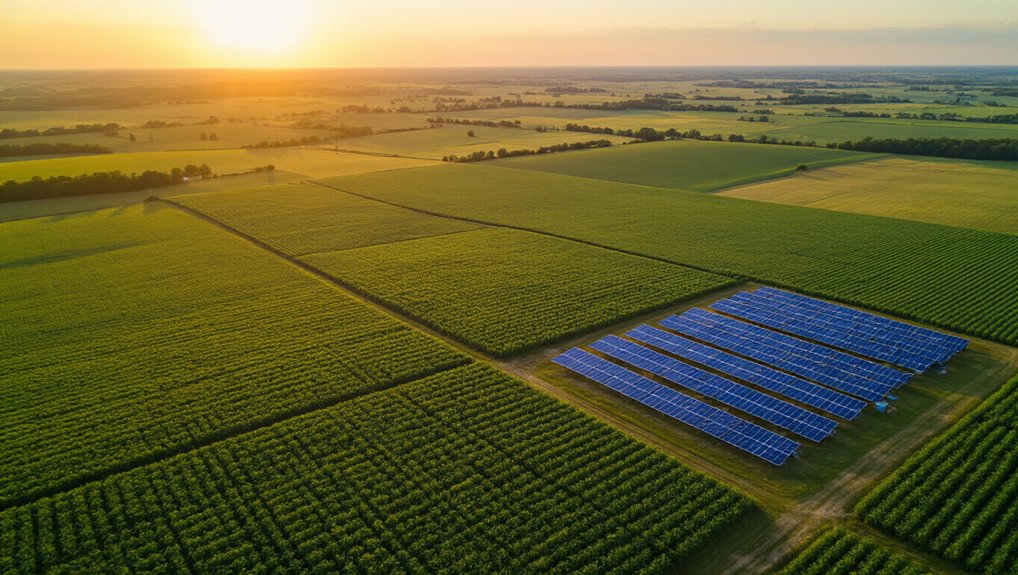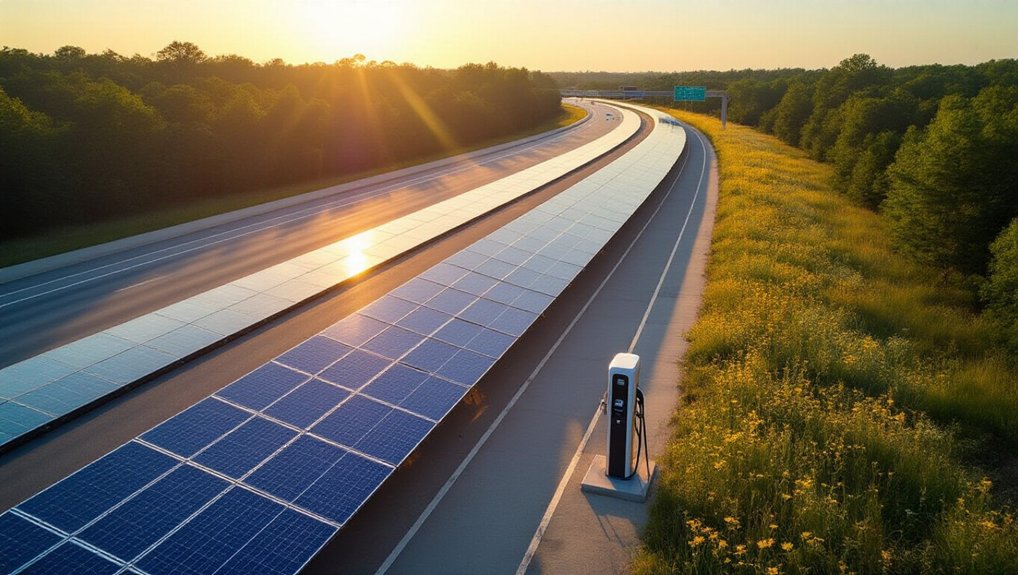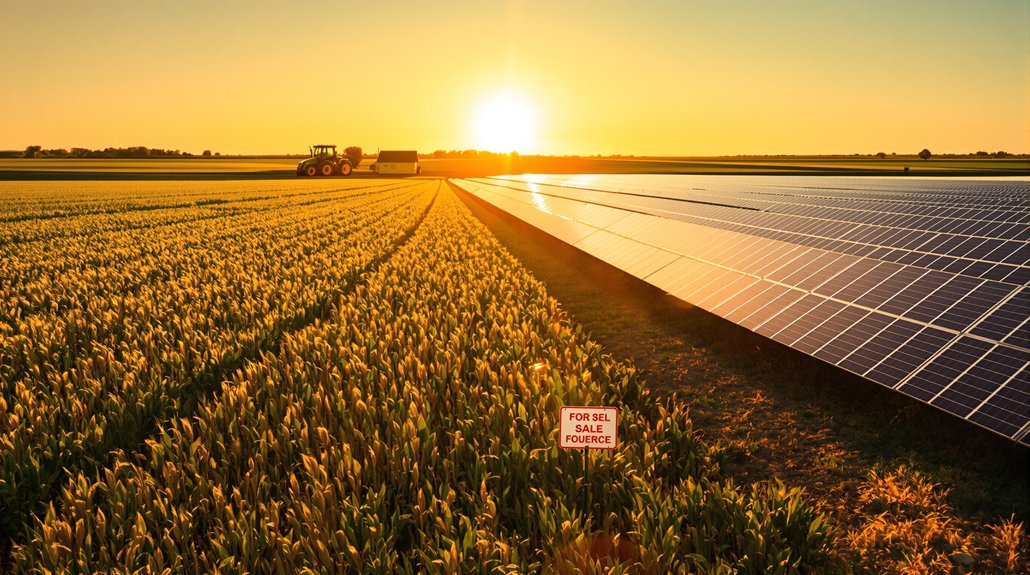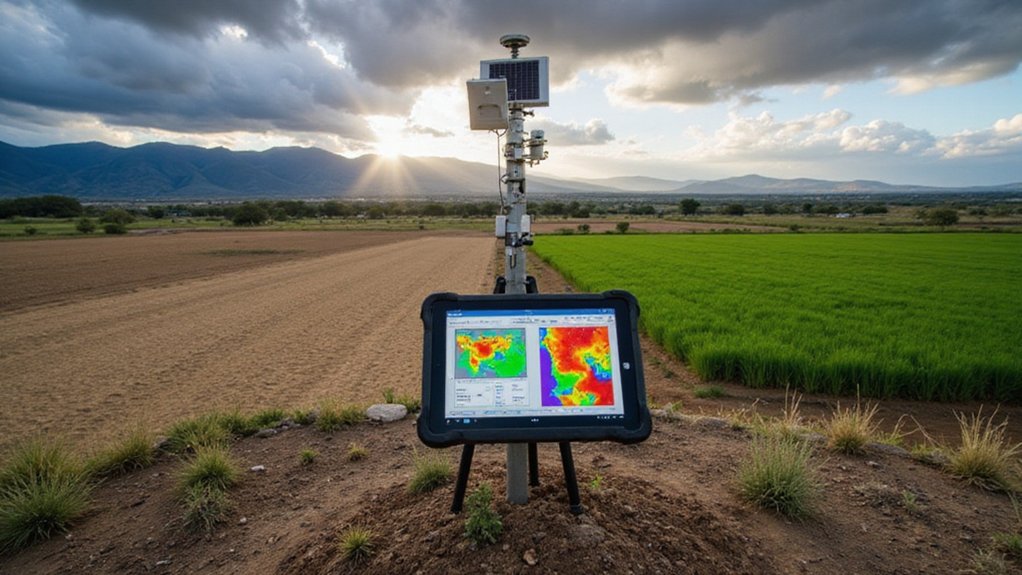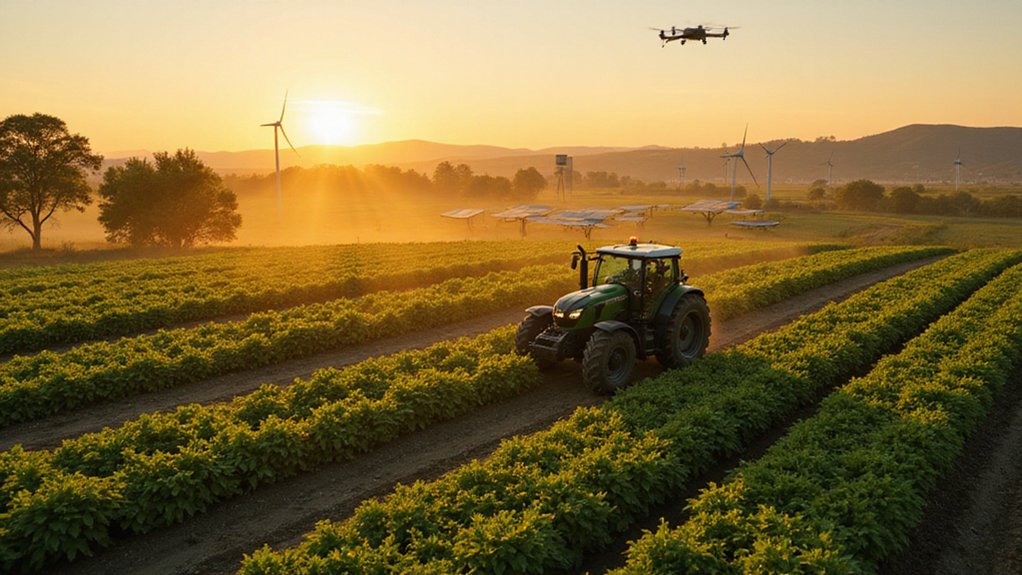While Arkansas farmers worry about losing their fields to solar panels, the actual numbers tell a different story. Solar arrays currently occupy just 0.2% of Arkansas agricultural land. That’s it. Agriculture still controls more than 99% of farmland, despite all the hand-wringing about solar expansion.
The math is pretty straightforward. Out of 13.7 million acres of agricultural land, utility-scale solar uses somewhere between 22,351 and 35,778 acres. Even if solar capacity somehow doubled overnight – which won’t happen – it would still use less than 1% of farmland. Arkansas does have more solar on farmland than the national average, which sits below 0.05%. But we’re still talking about tiny percentages here.
Meanwhile, farmers are actually making money from this arrangement. Take Producers Rice Mill, which processes 40 million bushels annually from over 2,000 farmers. They’re now running on solar-plus-storage, cutting their energy costs. The Batesville School District? They fixed their energy budget deficit with solar panels. Smart moves in a state where electricity rates bounce around like ping-pong balls.
Farmers profit while schools fix budget holes with solar panels as electricity rates ping-pong around Arkansas.
The solar market in Arkansas hit $3.6 billion as of March 2025. That’s real money flowing into rural communities. The state ranks 20th nationally for solar capacity, with 2,770.57 MW installed. About 4.52% of Arkansas electricity comes from solar now, powering roughly 323,943 homes. Solar energy has become the fastest growing renewable in the region, mirroring its global expansion trend. Modern solar farms achieve remarkable efficiency, requiring only 5.5 acres per megawatt compared to nine acres needed just a decade ago.
Here’s the kicker – most solar projects don’t even want prime cropland. They’re targeting marginal, less-productive areas near existing infrastructure. Places where conventional farming barely turns a profit anyway. Some sites are exploring agrivoltaics, where farming and solar coexist. Others provide habitat for pollinators and native plants, reducing chemical runoff in the process.
The solar industry brought 416 jobs to Arkansas, spread across 32 companies including manufacturers and developers. Investment topped $2 billion in 2024. Community solar programs keep expanding, creating more employment in rural counties. Landowners who lease their property for solar development receive lease payments ranging from $450 to $2,500 per acre annually.
Arkansas expects to nearly double its solar capacity over the next five years. Farmers will still have their 99% of the land. The sky isn’t falling. It’s just getting a bit more productive.
References
- https://www.uaex.uada.edu/media-resources/news/2025/may/05-29-2025-ark-solar-ag-footprint.aspx
- https://bioengineer.org/solar-power-system-installations-affect-less-than-1-of-agricultural-land-in-arkansas/
- https://m.farms.com/news/solar-power-system-installations-impact-less-than-1-percent-of-arkansas-ag-land-227872.aspx
- https://seia.org/wp-content/uploads/2025/03/Arkansas-1.pdf
- https://www.uaex.uada.edu/publications/pdf/FSA1105.pdf
